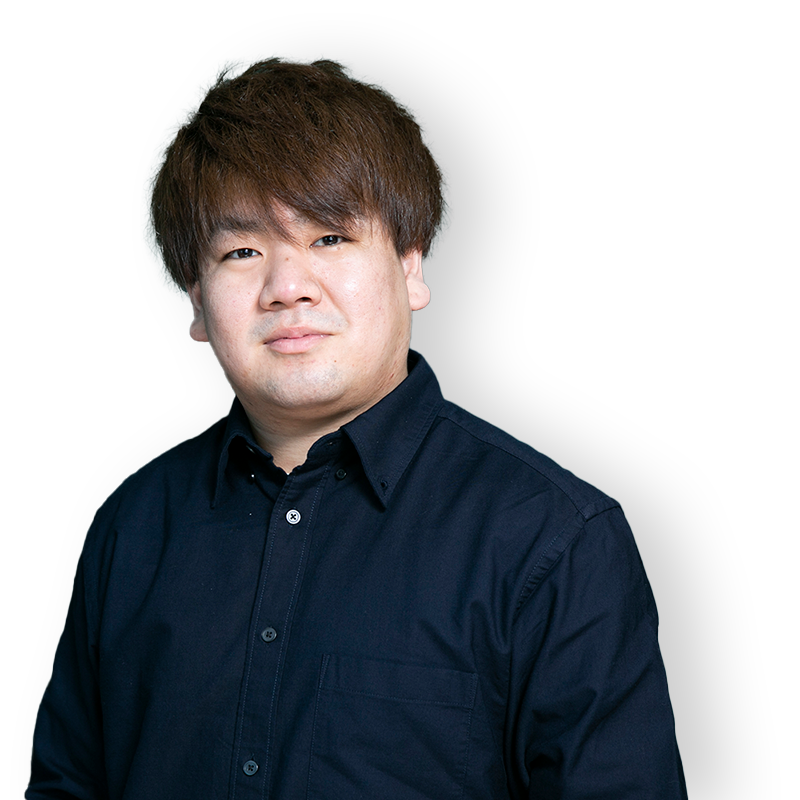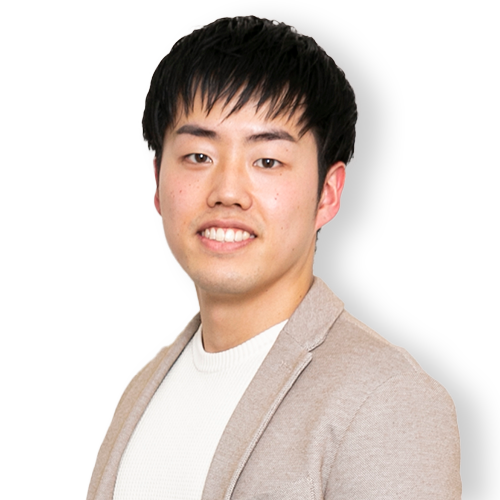An environment that is passionate about game creation
What sparked my desire to work in the game industry was my first experience with a VR headset in high school. I was shocked by how real it all felt—almost as if I'd found myself transported into the very world of the anime or video game.
I joined a club in high school that gave me the freedom to create whatever I wanted, such as games and robots for contests. At university, I decided I wanted to study the techniques and technology used in VR so I could develop my own headset.
A VR headset is a device that creates the illusion of reality by stimulating one's sense of sight and hearing. In my research lab, I focused on exploring methods that could provide feedback to players using the five senses, such as smell and touch, and used those techniques to develop content for entertainment. During that period, I gained valuable experience in both software and hardware development, as well as working with a team, both of which are relevant to my current job.
My first meeting with SEGA was at a job fair. I spoke to a recruiter at their booth and, next thing you know, I was offered a chance to work part-time for about two to three months.
What struck me the most was the atmosphere of the workplace. Even though it was my first time being there, the atmosphere brought back memories of my high school club. The employees were all friendly and treated me like their equal. I was also impressed by how serious everyone was about creating games.
At the time, I was assigned to work on the controls for a robot. After seeing SEGA's creation process firsthand, I couldn't wait to join.
SEGA's unique user-first development approach
I'm currently in charge of developing software for a medal game, and write the code for it. My proudest accomplishment probably has to be the first time I saw my own work implemented into the device. I remember how excited I was when the game, built using my code, came to life and started moving on the big screen.
I also have many fond memories of our on-site tests, where we would have people come to the arcade to try our prototype machines.

I remember being a nervous wreck the whole time because I was worried that bugs would show up my section of the programming, but we finished up three days of testing without a hitch. Watching people have fun playing gave me such a sense of joy and gratification.
After joining SEGA's Development Team, it struck me just how much everyone cares about the users.
If we feel that the user is likely to misinterpret anything, we make sure to fix it and get it right down to the very last detail. It shows in how well SEGA's medal games run so smoothly. I mean this in the best of ways, but I think the homelike atmosphere at work brings out my full potential.
Going above and beyond to create an epic game
At SEGA, we're blessed to be surrounded by seasoned veterans. These experts are always approachable and more than willing to answer any questions you may have. We even have regular study sessions where we can share our knowledge with each other.
What's more, everyone here has a go-getter mentality. Some projects have even started out with someone creating a program and asking for input before pitching it. You can really tell SEGA places great value on game development.

My end goal is to develop a game so famous that it becomes a household name. "Mushiking" is one of SEGA's most well-known arcade games. It's so famous that there isn't anyone from my generation who hasn't played it. To develop a game of that caliber, I want to hone my skills as a programmer and learn more about game design.
SEGA offers programmers the opportunity to pitch game ideas. The company even has several directors who originally began their career as programmers. In order to create more interesting games, I'd love to challenge myself to seize every opportunity that comes my way.
*This interview was conducted during the first year of employment.
10:30 AM I arrive at the office, check my emails, and plan my schedule for the day.
11:00 AM Implementation work that involves checking for bugs that require fixing.
12:30 PM Break for lunch at the cafeteria with senior staff members in my department. I also read tech blogs to brush up my skills.
1:30 PM Continue fixing bugs and ask my senior colleagues about things I don't understand.
6:00 PM Meeting with the Programming Team to share information and confirm tasks.
7:00 PM Playtest on a device and confirm the results.
7:30 PM Work day ends. I like to watch a movie and relax.

STAFF INTERVIEWS
















